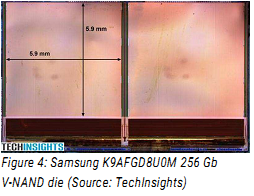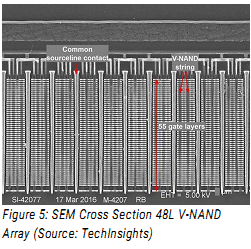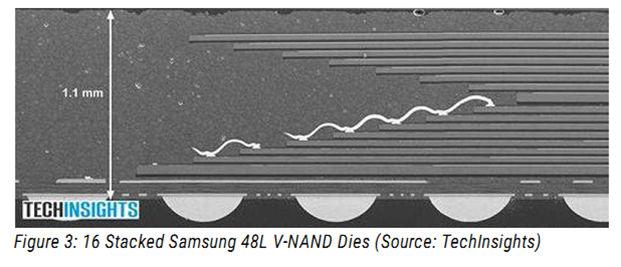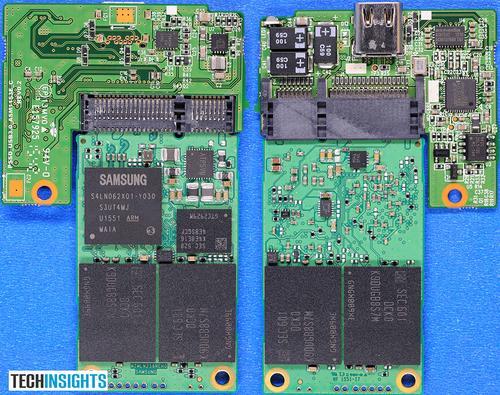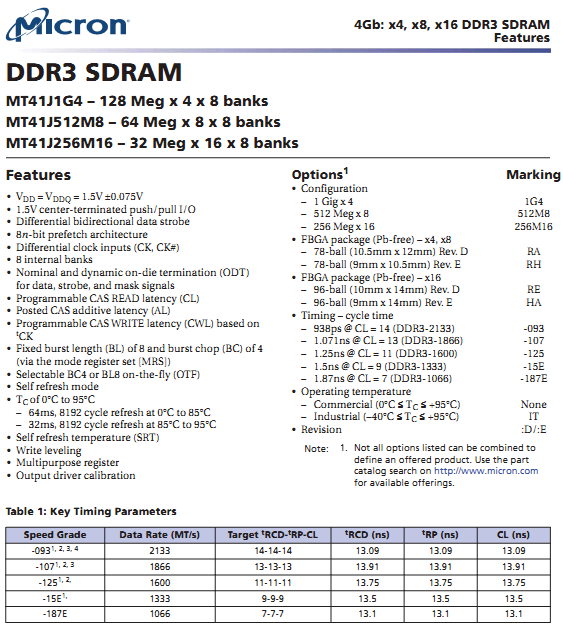Digitaltechnik12 SpeicherzellenfelderProf. Dr.Jörg Vollrath11 Zustandsdiagramm und Zähler |

|
Ein kurze Videozusammenfassung der Vorlesung
Länge: 10:29 min
Zeitverhalten einer Schaltung mit Speicherglied
Länge: 6:03 min
Rückblick und Heute
Rückblick:
- Zustandsdiagramme
- Modulo 5 Zähler
- Spezifikation: Symbol, Zeitverhalten
- Zustandsdiagramm, Zustandstabelle, Minimalform
- VHDL Beschreibung und Test
- Schaltplan, LTSPICE und Test
Heute:
- Bildverarbeitung, PC und Speicher
- Speichertypen und Klassifizierung
RAM, SRAM, Flash - Aufbau
- Kenngrößen
- Speicherstrukturen
- VHDL Realisierung
Lesen: Reichardt: Kap 15
Praktikum
Versuch 4: Tasterabfrage- Problembeschreibung: Taster
- Zustandsmaschine für dp
- Dateien: xdc, VHDL, VHDL test
- Abschnitte: COMPONENT, SIGNAL, UUT, Zuweisung
Versuch 5: Zustandsmaschine
Schieben der angezeigten Zahl
- Transfer:
Zustandsmaschine dp wird kopiert und erweitert für an
Selbstständig: SIGNAL, Zustandstabelle mit case - Weniger detailliert Anweisungen:
Erstellung des Zeitablaufs in der VHDL Testdatei.
Durchführung der Simulation
Implementierung - Fragen zum Nachdenken und zur Lösung
Bildverarbeitung
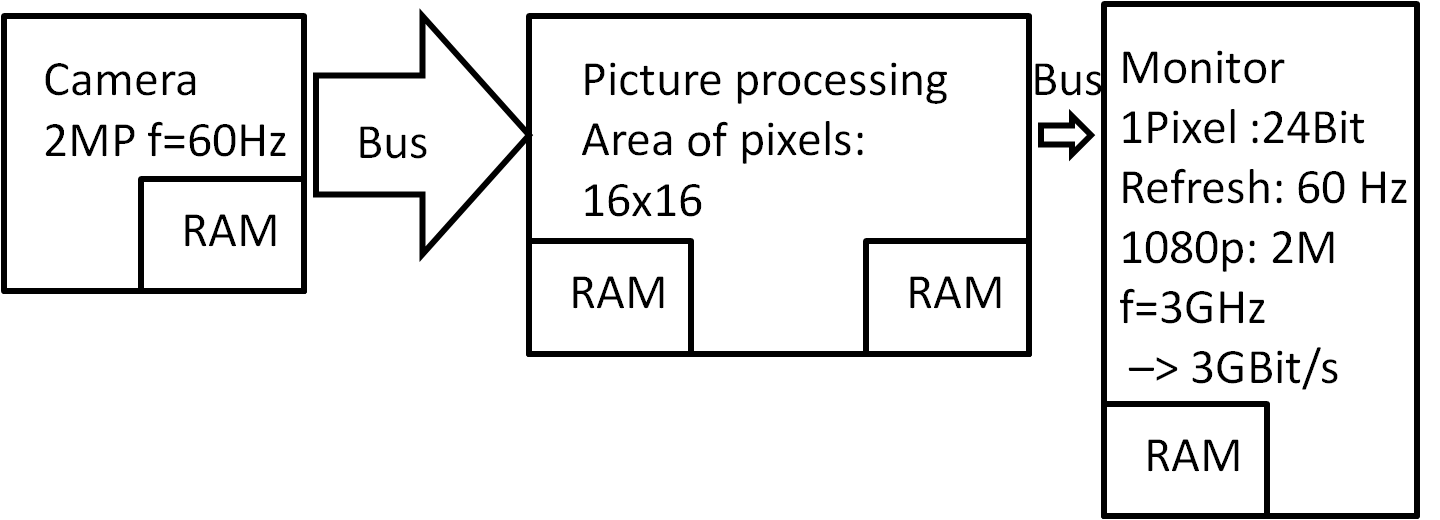
Digitale Halbleiterspeicher
- Bussystem
- Adressen
- Daten
- Kontrollleitungen
- Aktivieren, Schreiben, Lesen
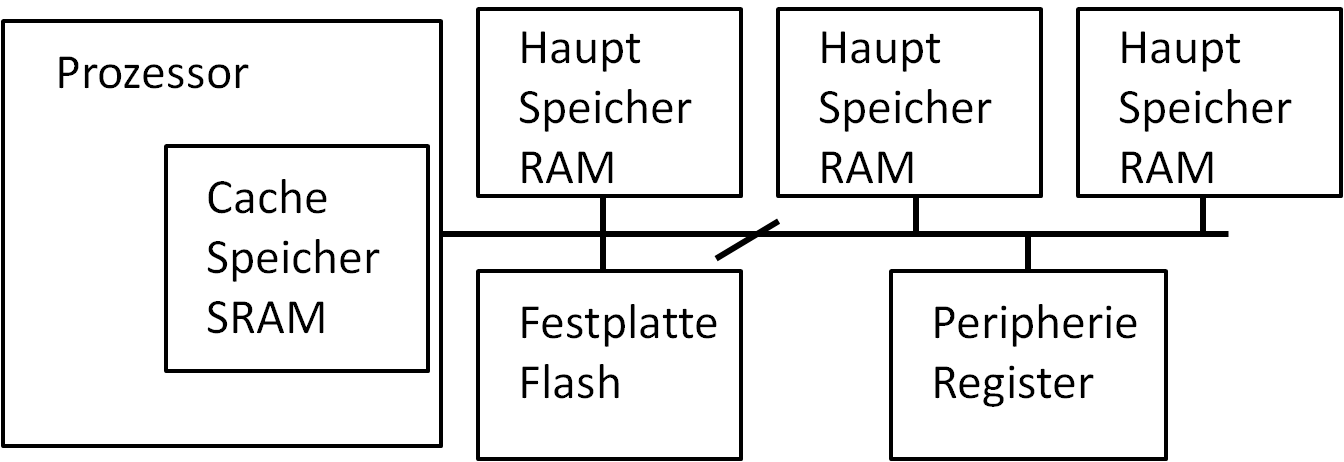
Speicherglieder, Speicherfelder, Memory Array
Zellenfelder: grosse Speicher
|
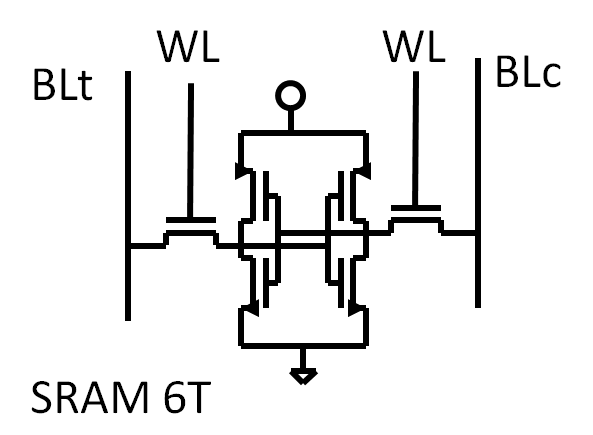 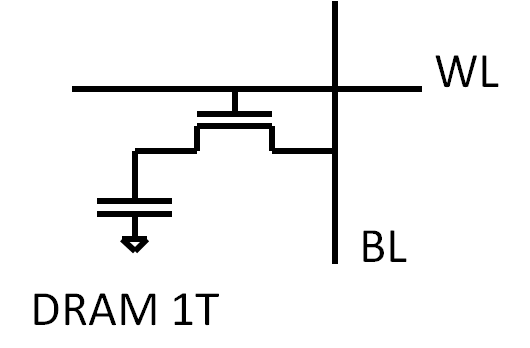 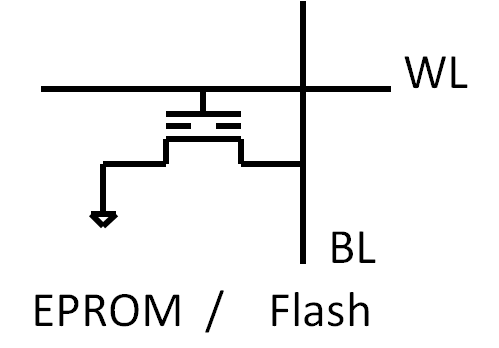 |
Memory Array
Size = B · D · 2n · 2m
Kenngrößen von Speichern
- Wortbreite in Bit
- Speicherkapazität in Bit (Abk. b) oder Byte (Abk. B):
k(ilo) =210 =1024, M(ega) = 220 =1048576, G(iga) = 230 , T(era)=240, P(eta)=250 - Elektrische Verlustleistung
- Speicherzugriffszeit
- Speicherzykluszeit
- Data Retention
- Endurance
Storage device
DRAM (capacitor)
SRAM (latch of transistors)
Flash (transistor with floating gate)
FRAM (Ferro Electric hysteresis)
MRAM (Resistance change due to magnetization)
PCRAM (resistance change due to solid/solid transition)
Needed Area
DRAM: 6F2 one capacitor + 1 select device: 1T + capacitor
SRAM: 256F2 4 transistors + 2 select devices: 6 T
Flash: 4F2 (16 level: 1F2) 1 Transistor with floating gate: 1T
Volatile versus nonvolatile memories
Information loss: Volatile versus nonvolatile memories
SRAM, DRAM lose information without power, Flash, EPROM and FRAM don’t.
DRAM loses information without constant refresh of memory cells.
Speicher: Anwendungen (Application)
Samsung 21nm 48L V- 256Gb NAND Flash memory in 2TB SSD
Update 2020:
512 Gb .. 1 Tb Chip 120/128 Layer 4 Level pro Zelle 1 GB Micro SD Card: 360 € 12/2/2020 Intel N28A die, 29F04T2ANCQJ1 package, 2nd 3D QLC NAND die from Intel and 1024 Gb (1 Tb) with 96L NAND array. http://www.techinsights.com/techservices/TechInsights-Samsung-48L-3D-V-NAND.pdf
In diesem Beispiel wird die Integrationsdichte nicht nur durch die kleinste Strukturgräße F lateral bestimmt.
Mehrere Bits werden in einer Speicherzelle gespeichert. Mehrere Speicherzellen sind vertikal übereinander angeordnet. Mehrere Chips werden in ein Gehäuse montiert. Dadurch ist es möglich auch ohne Strukturverkleinerung mehr Funktionalität pro Volumen zu realisieren. Speicherzellenfeld SRAMSimulationCLK high activates switches to select a memory cell and read and writeSequence Op,Addr,Data: R,0,0; W,1,1; W, 4,0; R,0,0; R,E,1; R,E,1; R,4,0; R,1,1; R,0,0;R,0,0 Verzögerungszeit 4ns von der steigenden CLK Flanke bis zum Datum. 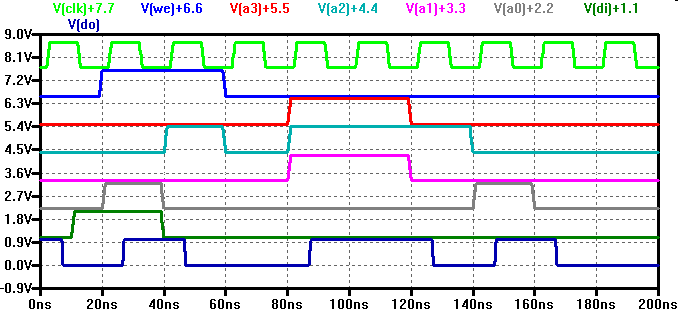
Da es 10 CLK high Zeiten gibt werden 10 Operationen durchgeführt.
Diese sind oben aufgelistet: R,1,0 Lesen einer "0" an der Addresse 0. Jede Operation dauert 20ns. Bei den Leseoperationen kann man die Zugriffszeit zwischen CLK rising und do-Änderung sehen. Durch die Schreib- (W), Leseoperation (R) überprüft man die Speicherung der Information in der Zelle. VHDL-Code: ROM
VHDL-Code: RAM 01
VHDL-Code: RAM 02
DDR3 SDRAM Access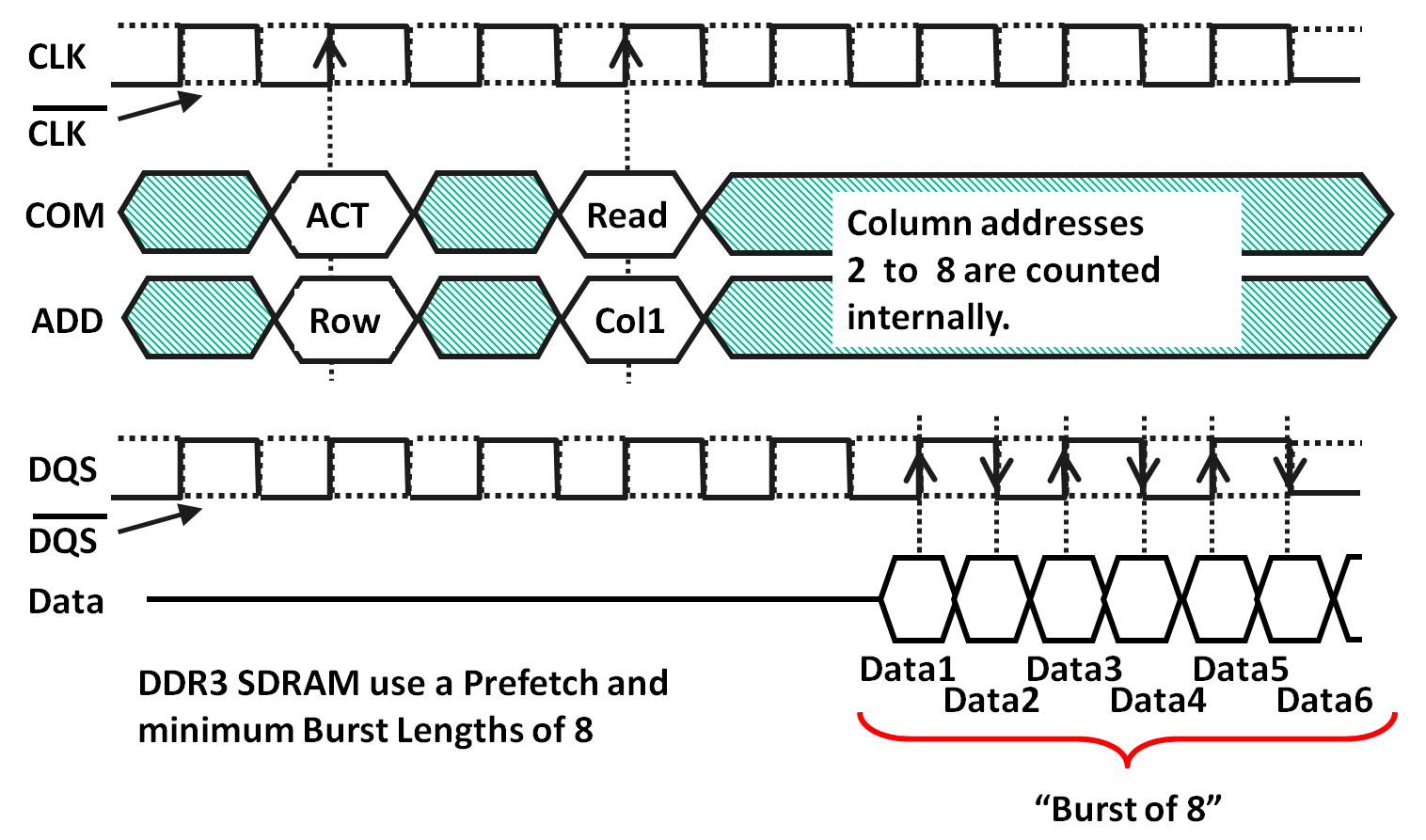
Cycle time:
Latency: DDR3 Datasheet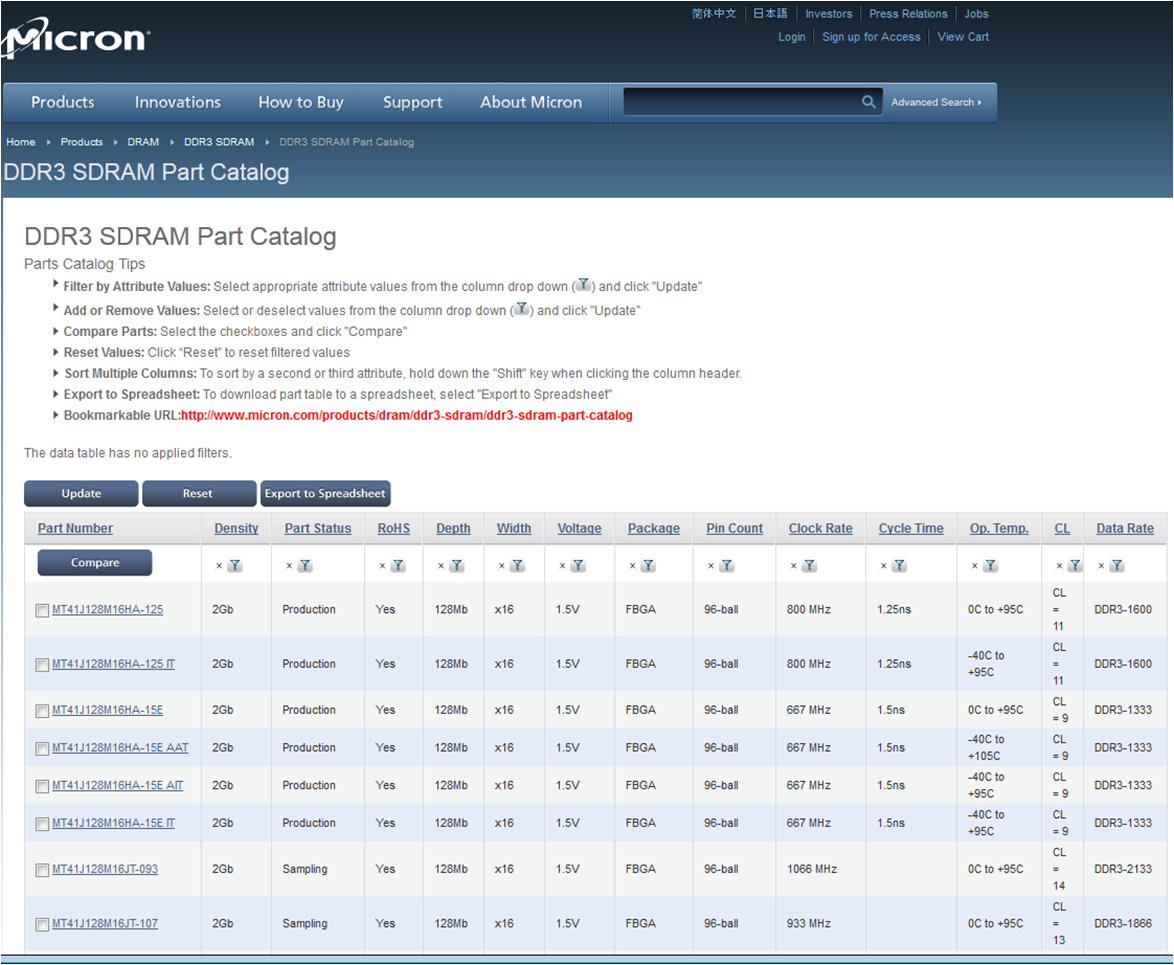 DRAM memory manufacturer: Samsung, Hynix, Micron DDR3 Datasheet Details
Aufgaben 01Es soll ein 64MBit Speicher mit 8 Datenleitungen realisiert werden. Wie viele Adressleitungen werden benötigt?Ein Digitalbaustein hat 4 Eingänge, ein Register mit 4 Bit Speicherzellen und 5 Ausgänge. Wie viele Tests oder Zeilen der Zustandstabelle (Vektoren) brauchen Sie, um die logische Funktion des Bausteins vollständig zu testen? Aufgabe 02a) Erstellen Sie die Zustandstabelle für folgenden VHDL Code.b) Wie viele Eingänge, Ausgänge und Speicherzellen werden damit realisiert?
Aufgabe 02 aErstellen Sie die Wahrheits-/Zustandstabelle.
Aufgabe 02 bZeichnen Sie das Zeitverhalten.
Fragen und Diskussion
13 MP3 Player LFS
DRAM, SRAM, Flash, Memory Array, Volatile Memory, Cache, Hard Disk Memory, SDRAM,
Latency, Burst, Samsung, Micron, VHDL 'generic' Deklaration, VHDL Zahlenzuweisung
Hochschule für angewandte Wissenschaften Kempten, Jörg Vollrath, Bahnhofstraße 61 · 87435 Kempten
Tel. 0831/25 23-0 · Fax 0831/25 23-104 · E-Mail: joerg.vollrath(at)fh-kempten.de Impressum
|

